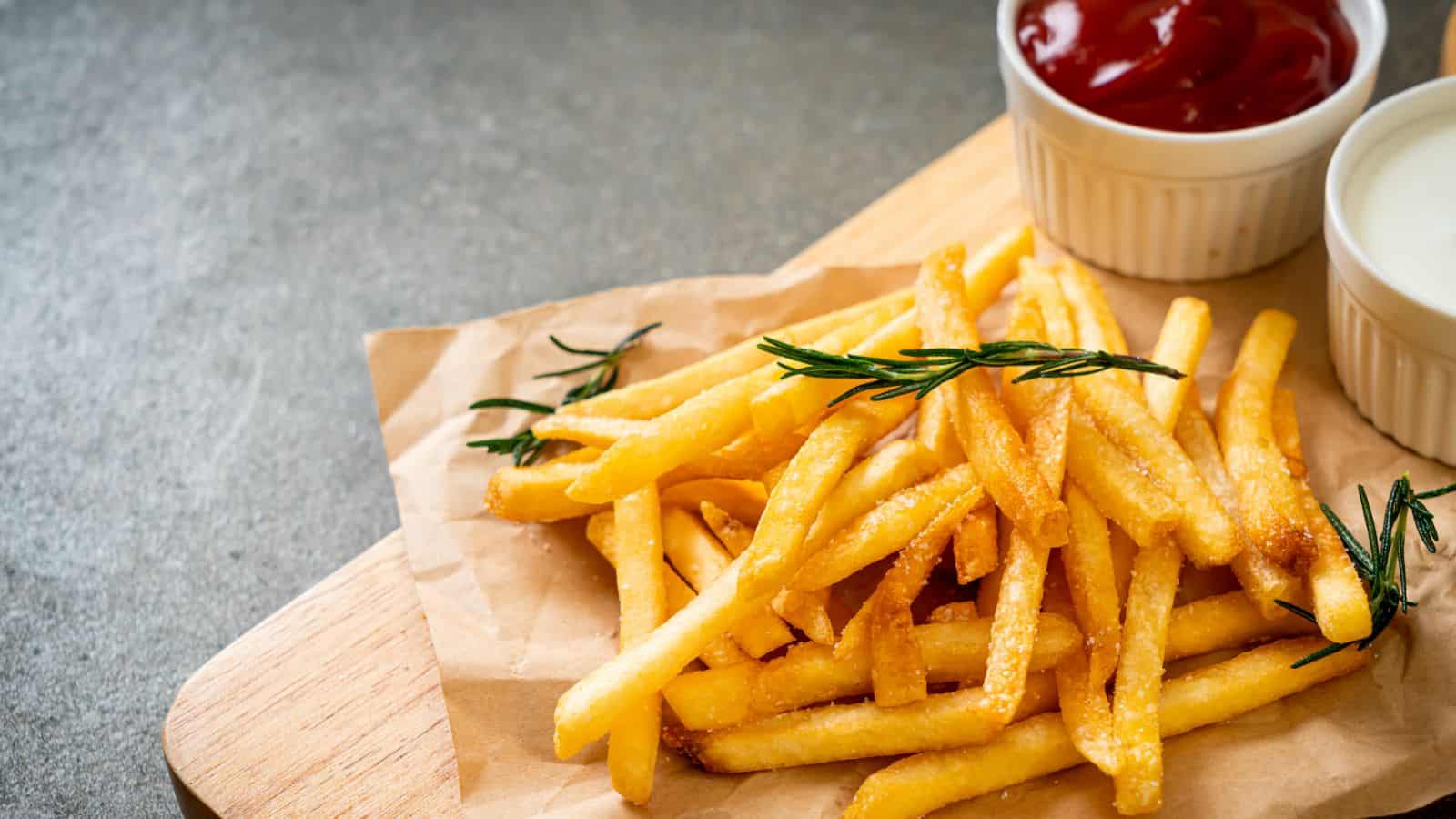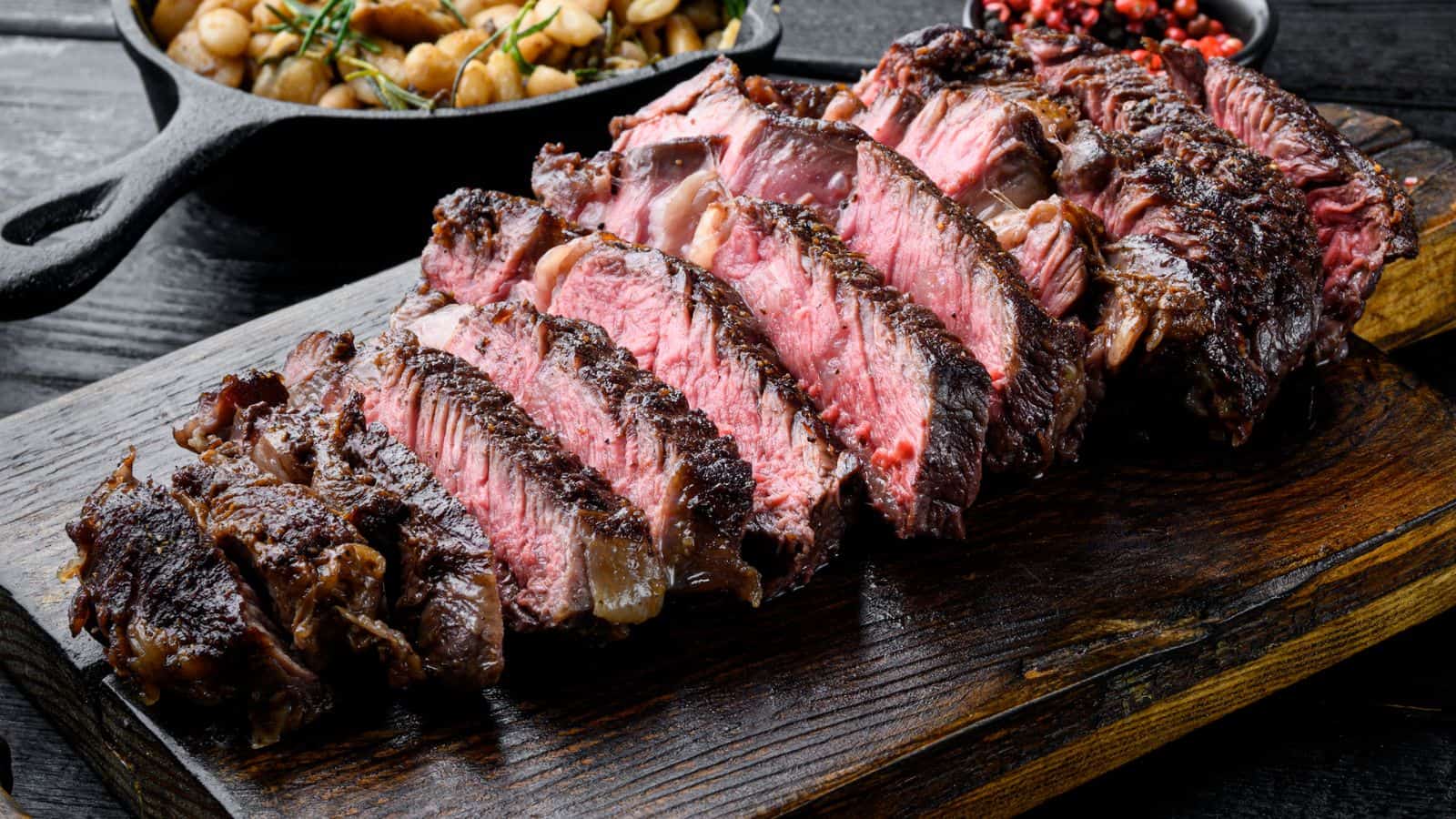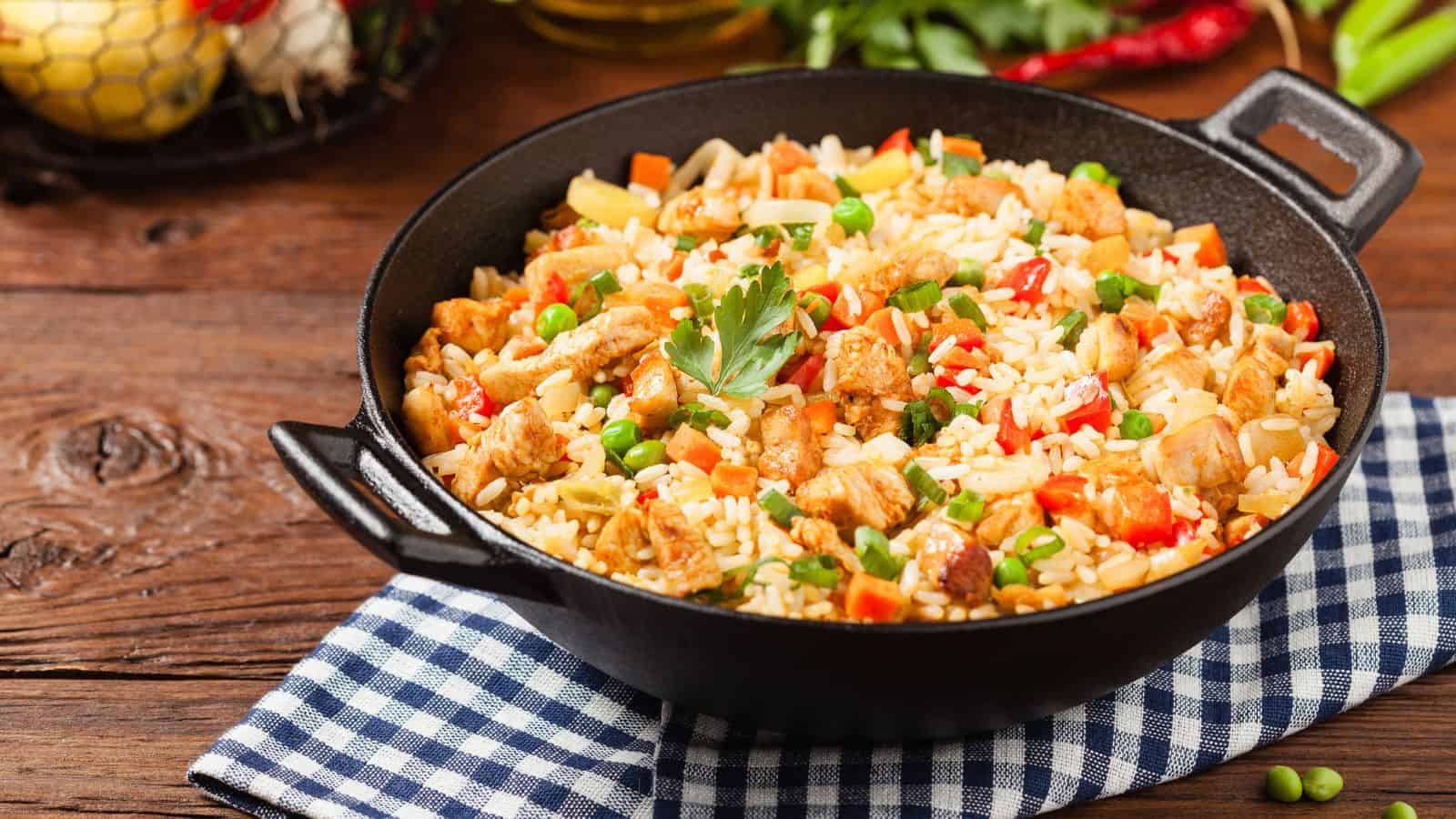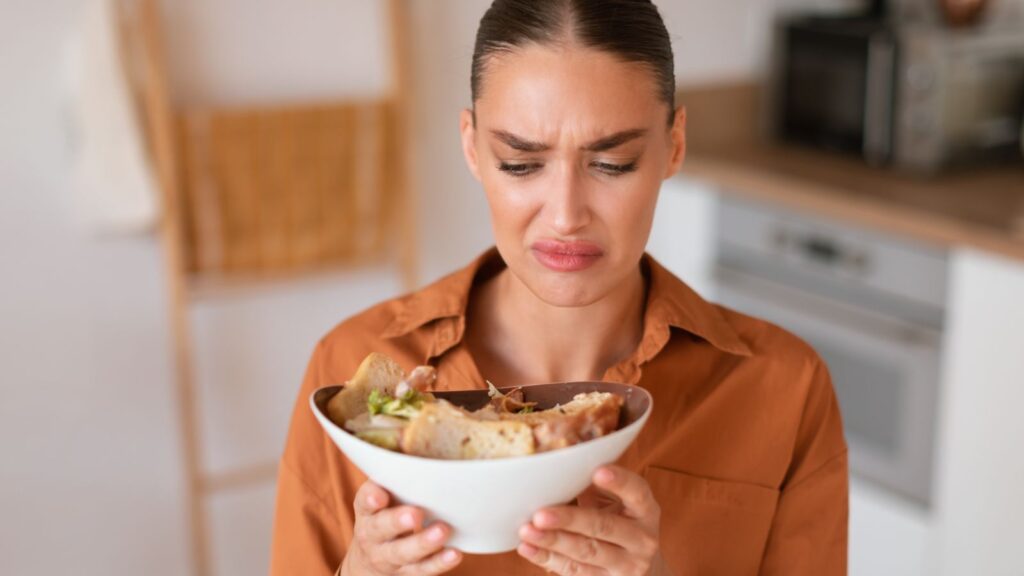Getting a delicious plate of your favorite food may have you hoping to enjoy it again the next day. But let’s face it—some of our favorites just don’t work as leftovers. All these foods listed are best enjoyed at the moment and shouldn’t even be considered to eat after a few hours.
Mac and Cheese

A highly regarded family favorite, mac and cheese is always good—except when you reheat it. “Reheated macaroni and cheese has an unfortunate tendency to become hard and dry if you don’t reheat it the right way,” correctly states Southern Living. So don’t let your grandma’s mac and cheese get dry and grainy; eat it all in one sitting.
French Fries

The invention of the air fryer was supposed to make it so we could take some of our bottomless fries home with us and eat their crispy deliciousness again, but alas, it’s still a dream. Reheated fries will never have the same luster as they did fresh out of the fryer.
Salad with Dressing

Unless you have the dressing on the side, leave your leftover salad at the restaurant. I know it may sound like a good idea to take it home, but the greens will become wilted and soggy, or the dressing will separate. Then it’ll just end up being trash you have to take out.
Sushi

At the top of the list of things that don’t get better with age is sushi. Learning Experience Design Manager Katie Heil recommends that raw sushi be eaten within one to two days of preparation. Be especially mindful of gas station and grocery store sushi that may not have been made fresh the day you bought it.
Nachos

The perfect nacho is a thing of beauty, with the ideal ratio of chips to toppings, but if you don’t eat them fast, it all goes to waste. Even in the time it takes to eat a plate, some chips can go soggy and mushy, just letting toppings slide off with their limpness. The next day? Let’s not even think about it.
Hamburgers

When your bacon cheeseburger comes out the size of your head, it may be better to make a new friend to split it with than try to eat it the next day. There’s no proper way to reheat them without completely deconstructing what has probably melded into one mess in order to keep the hot items hot and the cold items cold.
Cooked Pasta

If you pour enough pasta in the water to feed a small army, suck it up and become a small army, because next-day pasta will leave you feeling like you got stuck with an MRE. The pasta will either dry out or become gummy, and there’s no saving it either way.
Avocado Dishes

You finally got to your avocado right when it whispered, “I’m ripe,” but don’t make the mistake of thinking you can pre-make your guacamole. “When cut and exposed to the air for some time, the avocado turns brownish or brown; this is due to a chemical reaction resulting from the oxidation of the phenols it contains,” states Saborea Uno Hoy. Not only is the brown color off-putting, but the flavor can quickly become unappealing.
Fried Appetizers

Like their cousin the French fry, fried appetizers are a one-and-done deal. They’re just a limp shadow of their former selves if you don’t eat them fresh. No oven or air fryer can bring them back, and the microwave will take what is left of their dignity.
Cooked Vegetables

People generally cook their veggies to their desired crispiness, so reheating them can often be disappointing. They either end up like mush or just overcooked in general. Broccoli, cauliflower, and Brussels sprouts develop off-flavors that may explain why kids don’t always love them. Sometimes, making them into a soup can save them, though.
Scrambled Eggs

They only take minutes to make, so there’s literally no point in pre-making them or trying to save some for later. Once they’ve been put in the fridge, they become dried out, and reheating them makes them rubbery, like hotel hot bar eggs, but worse.
Steak

The tender, juicy ribeye cooked to a medium-rare that would make Gordon Ramsay smile will not be magical tomorrow. Unfortunately, to reheat a steak, you must cook it more, meaning whatever temperature you prefer won’t be possible. And if you eat a well-done steak, reheating it will turn it into shoe leather.
Instant Noodles

Ok, so amazing may be an overstatement, but sometimes college nostalgia hits, and they’re momentarily amazing. However, under no circumstances should you try to make the moment linger and save them for later. The noodles will absorb the broth and become a weird slop; just don’t do it.
Tacos

Unless the tacos haven’t been put together yet, they can’t be eaten later. Whether you’re a crunchy or soft-shell person, the meat and toppings will soak through the tortilla and make an inedible mess. The best advice is to only put tacos together as you can eat them because you can always make another.
Deviled Eggs

Hard-boiled eggs can be saved in the refrigerator for up to seven days, peeled or not. However, Real Simple tells us, “Deviled eggs have a shorter shelf life because they contain a filling, usually made with mayonnaise or yogurt.” Wait until you’re ready to serve these classic appetizers to fill them, and you can always make them on the fly if a craving hits.
Alfredo Pasta

So much creamy goodness, but let’s face it; creamy things tend to separate and get greasy and clumpy once they’ve been reheated. The day-after experience can leave you questioning if you really like alfredo sauce at all.
Fried Rice

“If cooked rice is left standing at room temperature, these spores grow into bacteria that thrive and multiply in the warm, moist environment. The longer rice is left standing at room temperature, the more likely it will be unsafe to eat,” warns Healthline. Beyond the food poisoning risk, rice is hard to properly reheat without becoming too dry, and the flavors in fried rice become nothing but a dream of yesterday the next day.







